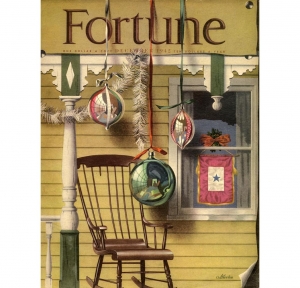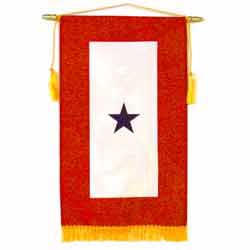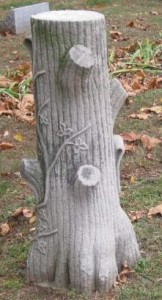 John Atherton (1900-1952)
John Atherton (1900-1952)
Christmas Rocking Chair, 1942
Cover illustration for Fortune (December 1942)
It may seem odd to focus on a Christmas cover image from 1942 in the late spring of 2013, but what makes this cover illustration for Fortune magazine extremely timely and appropriate is that it is about traditions—about remembering. Christmas Rocking Chair was the work of illustrator and artist John Atherton, who worked in both fields throughout his career. Much of his art work was either abstract in nature or was surrealist. As an illustrator, Atherton worked for many of the major periodicals and for a variety of influential corporate advertisers such as Dole. His illustrations often provided a nostalgic view of America, as you can see in this Fortune cover illustration.
Atherton’s illustration is of an American clapboard-sided house decorated for the holidays. This lapped wood-sided residence is painted an ochre-yellow tone—a traditionally common paint color since all that was need to change white to this grayed yellow tone would be to add finely ground yellow ochre stone to your base white paint. The turned and cut wood trim of the house’s porch is painted white with dark green accents.
In the front window of the porch hangs a military service banner with one blue star on a field of white. During the war, the government issued military service banners to the families of service men and women.* When a member of the armed forces was killed in action, a gold star replaced the blue on a white field.
Outside the window a small bundle of holly berries on their cut branches is tied with a red bow that has begun to fade with the passing days. And on the house’s porch sits a wooden Boston rocking chair, with one of its back spindles broken.** The colors of the clapboards and the close view of the porch detailing (the turned and cut wood trim) with cracks clearly visible implies that this house is old and is clearly time that the paint on the walls and trim be refreshed. That and the broken chair spindle let the viewer know that the house pictured here is in suspended animation, waiting, probably for the return of that young soldier whose vitality must have once animated this place.
Even more interesting to me, is that Atherton clearly shows that this picture is just a picture on a piece of paper. The right edge of that piece of paper is portrayed in paint as though it is curling up and away from the dark cork board on which was it tacked. The artist also shows us the silvery heads of the steel tacks that hold the picture of the house to the board. Over the top edge of the board he also shows us the tacked mast-head for that issue of the magazine.
If it only went this far, Atherton’s cover illustration would have been a lovely bit of trompe l’œil (fool-the-eye) painting. But over the front of the tacked mast-head and the porch picture, Atherton has also painted a bit of a tacky fake foliate garland falling down and a trio of thin holiday ribbons each tied to a Christmas tree ornament with smooth reflective surfaces. The ornament ribbons even appear to cast a shadow on the tacked papers segments. True to his reality, Atherton painted the reflection he saw of his studio on each of the ornaments. In the rear of that painted space in each of the ornaments, he included a dark silhouette of himself against the light of either a window in his studio or the open door at his back. So this painting is as much about recreating the real world as it is about the perceived world.
OK, that is all well and good, but why post an essay about this illustration in the weeks before Memorial Day? Memorial Day is a national holiday remembering the men and women who died while serving in the United States Armed Forces. Once known as Decoration Day, it originally only commemorated the Union and Confederate soldiers who died in the Civil War. The activity of this holiday was to visit the cemeteries and war memorials and to decorate these markers.
I would suggest that Atherton’s Fortune magazine cover illustration not only marked military service and the Christmas holiday, but it also alluded to loss. In cemeteries a grave marker of a broken column or of a tree trunk with its branches cut off are indicators of a life cut short. These are often used in memorials to someone who died young or in the prime of life. Similarly Atherton’s broken and lost spindle on the rocking chair might imply a life cut short. In this illustration even though the service flag’s star is still blue, loss and mourning are indicated in the tired paint, the falling-down tinsel, and the curl of the old image, one a family cannot bear to remove since they do not want to forget their fallen soldier. Remember, the work’s title is Christmas Rocking Chair.
* This tradition began when an army captain made such a flag to denote his sons’ service during WWI and became an official banner in September of 1917.
** A Boston rocker is a variation of the Windsor rocking chair. It was developed around 1840 in New England. The crest rail (the top of the back) is larger than a Windsor-style and it curves downward. The wooden seat also curves down in front and usually also in the rear. This was also the first mass produced rocking chair in America.
May 16, 2013
By Joyce K. Schiller, Curator, Rockwell Center for American Visual Studies, Norman Rockwell Museum









